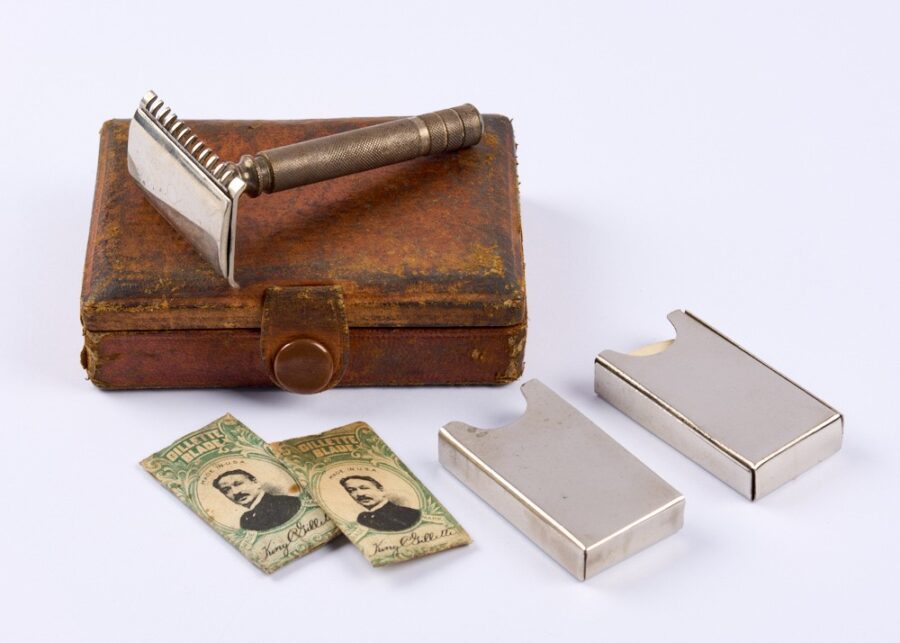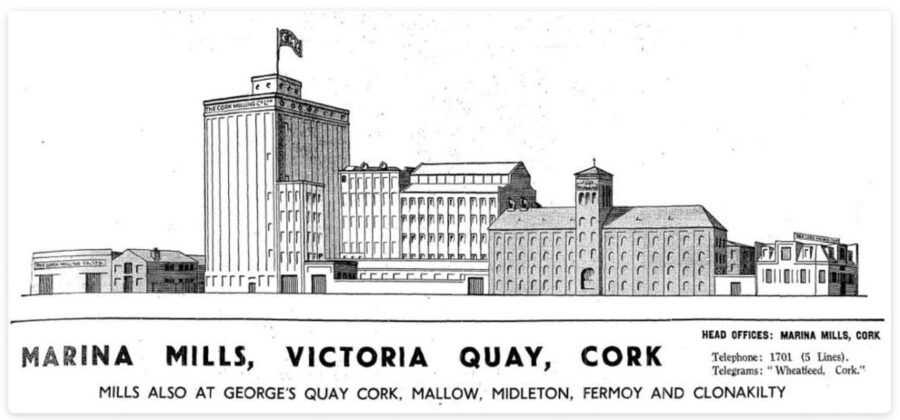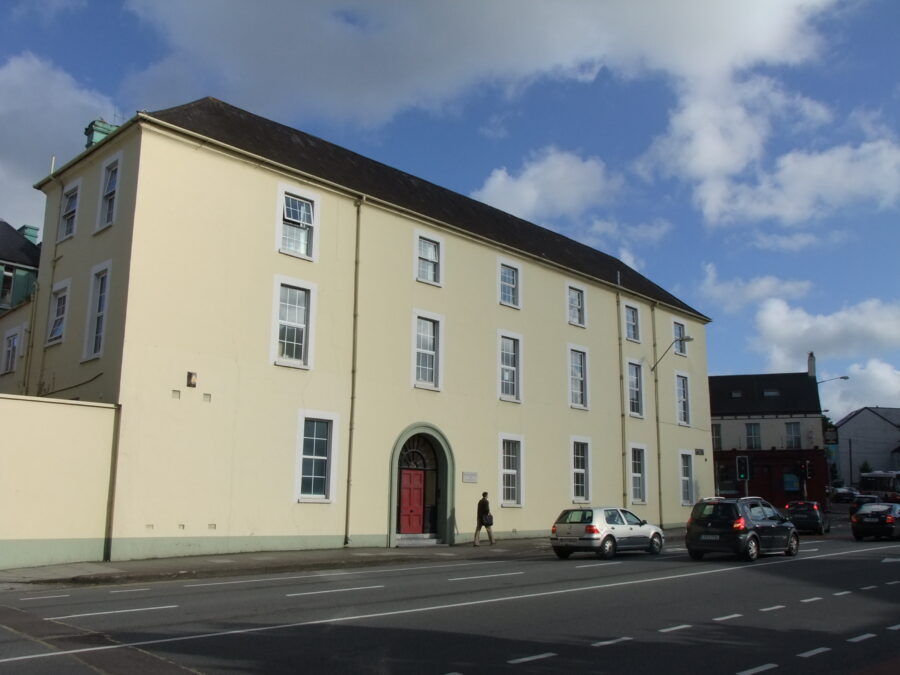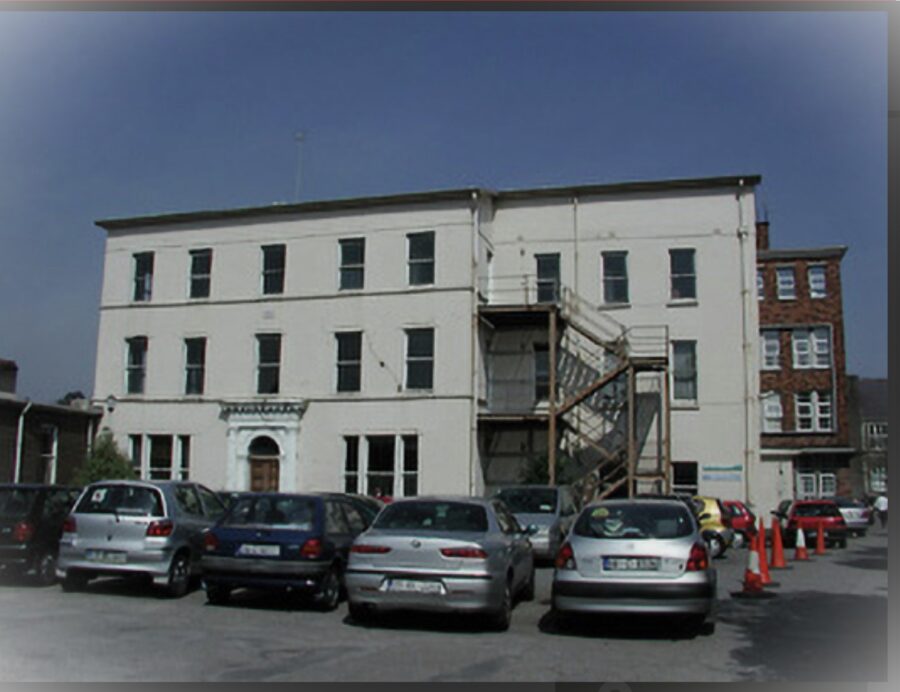
Kieran’s Our City, Our Town Article,
Cork Independent, 28 March 2024
Leo Murphy’s Shaving Kit 1921
Recently Cork Public Museum marked the return to Cork of a small shaving kit used by Commandant Leo Murphy who died at the hands of Crown Forces during the War of Independence in 1921.
Leo Murphy had been targeted by Crown Forces for his role as Commander of the 3rd Battalion, 1st Cork Brigade and his involvement in numerous notable IRA activities in the area, including the killing of British intelligence officer Captain Joseph Thompson in November 1920. He was shot and killed by soldiers from the Manchester Regiment during a surprise raid on a secret IRA meeting at O’Donovan’s Pub (now O’Shea’s) in Waterfall, on the outskirts of the city, on 27 June 1921. As Murphy lay dead at the side of the road, his pockets were searched, and the contents kept as ‘souvenirs of war’.
One of the items removed was a small personal shaving kit used by Leo Murphy while on the run. It ended up in display in the Manchester Regiment Museum in the town hall of Ashton-under-Lyne, in Tameside, Greater Manchester. The museum recently closed, and the Manchester Regiment Collection passed to the care of the Portland Basin Museum in Tameside.
Last year, Cork Public Museum Curator Dan Breen contacted his counterpart in the Portland Basin Museum, Rachel Crnes to enquire about the possibility of arranging the loan of the shaving kit for display in Cork.
The descendants of Walter ‘Leo’ Murphy came to the museum for a private viewing of the shaving kit before it goes on public display. The shaving kit will be displayed in the museum’s War of Independence exhibition, By Every Means at Our Command, alongside one of Leo Murphy’s hats, which was previously donated to Cork Public Museum.
Leo Murphy was born in his family’s The White Horse public house in Ballincollig in 1901. In 1917, he joined the Irish Republican movement and became a youth member in Fianna Éireann. In 1920 Cork Volunteer Headquarters sent Leo as a quartermaster, organiser and military trainer to the 3rd Battalion. The training consisted mostly of drill at first for the purpose of discipline and as the Company gradually increased in strength by twos and threes from the original six it was able to be organised on a proper basis.
Tim Herlihy in a witness statement (W810) for the Bureau of Military History, describes that he was a former founder members of the 3rd Battalion, 1st Cork Brigade. Tim outlines that in the autumn of 1920, after Terence MacSwiney, Lord Mayor of Cork, had died on hunger strike in Brixon Prison in London, the 3rd Battalion in force attended his funeral in Cork. It was reckoned that the Battalion paraded over 500 strong.
At this time after nightfall shots were fired occasionally about 200 yards from the Military Barracks at Ballincollig just to keep the military guessing. Tim further explains that the usual patrols followed, but there was an Intelligence System in operation in the Barracks, carried out by the local Volunteers. They sent out word to the Volunteers prior to the military moving out of the Barracks.
Tim highlights that there was a Captain Thompson, Intelligent Officer Manchester Regiment, who used to go into shops and houses in Ballincollig village brandishing a revolver and saying that if anything happened to him “the village would go up”. In November 1920, Thompson was seized at Carrigrohane on his motor bike and shot dead, his arms and bike being taken”. No reprisals took place but there was tension for a while. Captain Thompson was shot dead by Leo Murphy and two other Volunteers on the Model Farm Road. Thompson had previously violently raided Leo Murphy’s mother’s house.
Thompson was succeeded as Intelligence Officer by Captain Vining. It was he who shot Leo Murphy on 27 June 1921, just a fortnight before the Truce. Leo Murphy was then Officer-in- Command, 3rd Battalion, having succeeded Tim Herlihy, who was taken prisoner by the British.
On acting on information supplied to him on Leo Murphy’s movements, he and approx five other British Officers drove up in a car to Donovan’s public house at Waterfall one evening and surrounded the house. Tim Herlihy in his statements relates: “There were about forty-four in all in the pub, the great majority of whom were elderly men who had been attending a bowling match in the locality. Of all the crowd there were only a few Volunteers. Two of them escaped, but Leo Murphy, who tried to shoot his way out, was shot dead. Another Volunteer, Charlie Daly, who was unarmed, was taken away by Captain Vining and his party and his dead body was found at Douglas the next morning. He had been shot. Daly belonged to the 2nd Battalion (Cork City)”.
In mid-January this year, as Lord Mayor, I travelled with Dan Breen to Tameside to officially receive the shaving kit taken by Captain Vinning and the Manchester Regiment and to bring it home to Cork. I visited Dukinfield Town Hall and was greeted by Dublin-born Deputy Mayor of Tameside, Cllr. Betty Affleck, and executive leader, Cllr. Gerald Cooney (also of Irish descent).
Cork Public Museum Curator, Dan Breen on the occasion noted: “Cork City Council and Cork Public Museum would like to acknowledge the help and support given to the handover by their colleagues in Tameside Metropolitan Borough Council and the Portland Basin Museum. The return of the shaving kit to Cork brings closure to one chapter of Irish War of Independence but it highlights the complex history shared by the cities of Cork and Manchester and acknowledges the potential for future collaborations to better understand it”.
From his early days in Fianna Éireann, Leo Murphy’s story was one of courage and resilience. His promotion to quarter master of the 3rd Battalion by the age of nineteen in 1920, is an indication of his leadership qualities and the high esteem in which he was held by all within the Cork IRA. The commemoration of his life and times in our time shines a spotlight on his leadership and sacrifice. It also, through the Tameside Museum side, showcases why we need to keep searching for objects and documents associated with our War of Independence to make sure the full story is told.
My sincere thanks to Tameside Metropolitan Borough Council for their courtesy and co-operation and to Cork Public Museum for their consistent guardianship of Cork’s past. The shaving kit can be viewed by the public at Cork Public Museum.
Caption:
1246. Shaving kit of Leo Murphy, 1921 (picture: Cork Public Museum).


